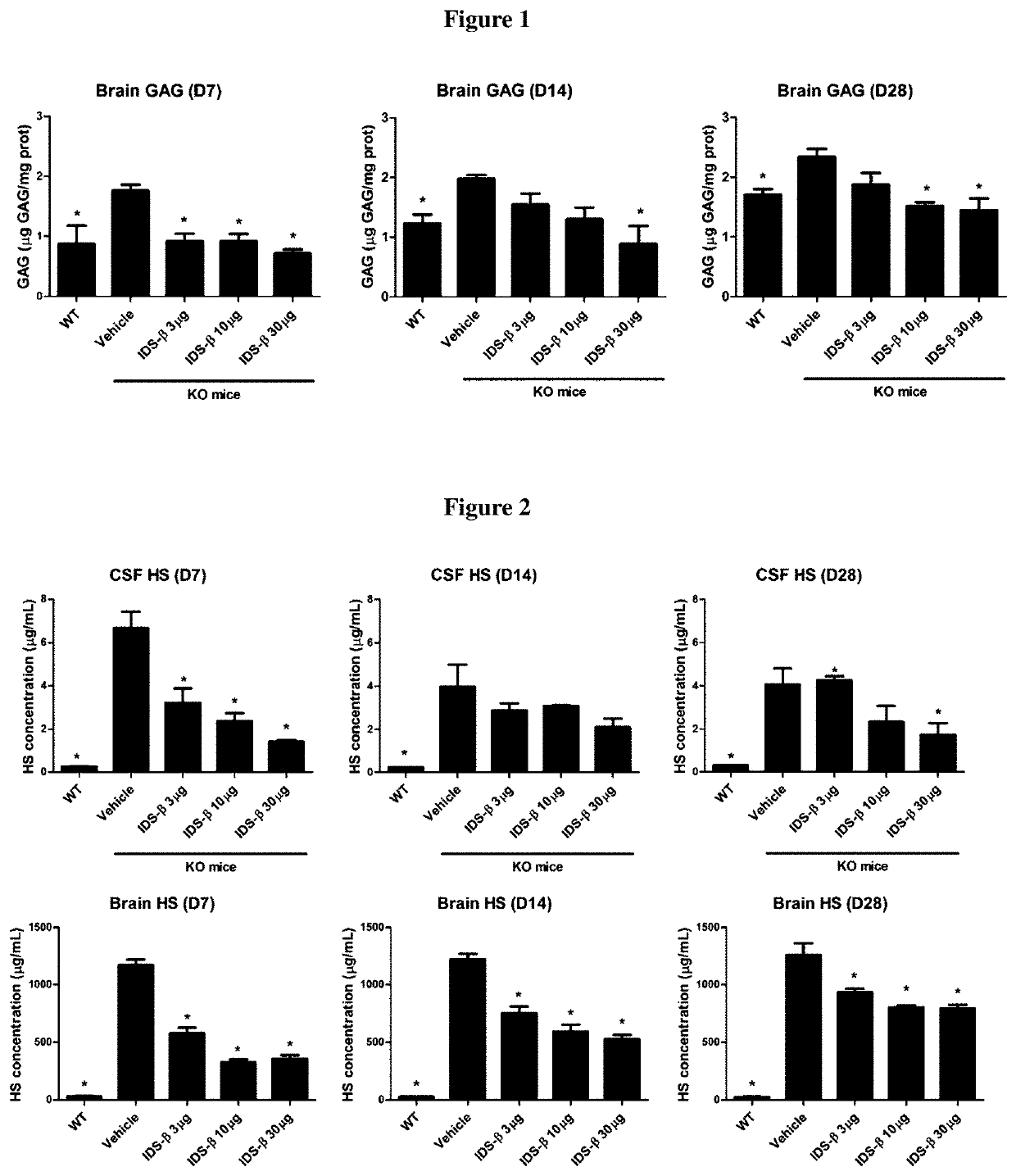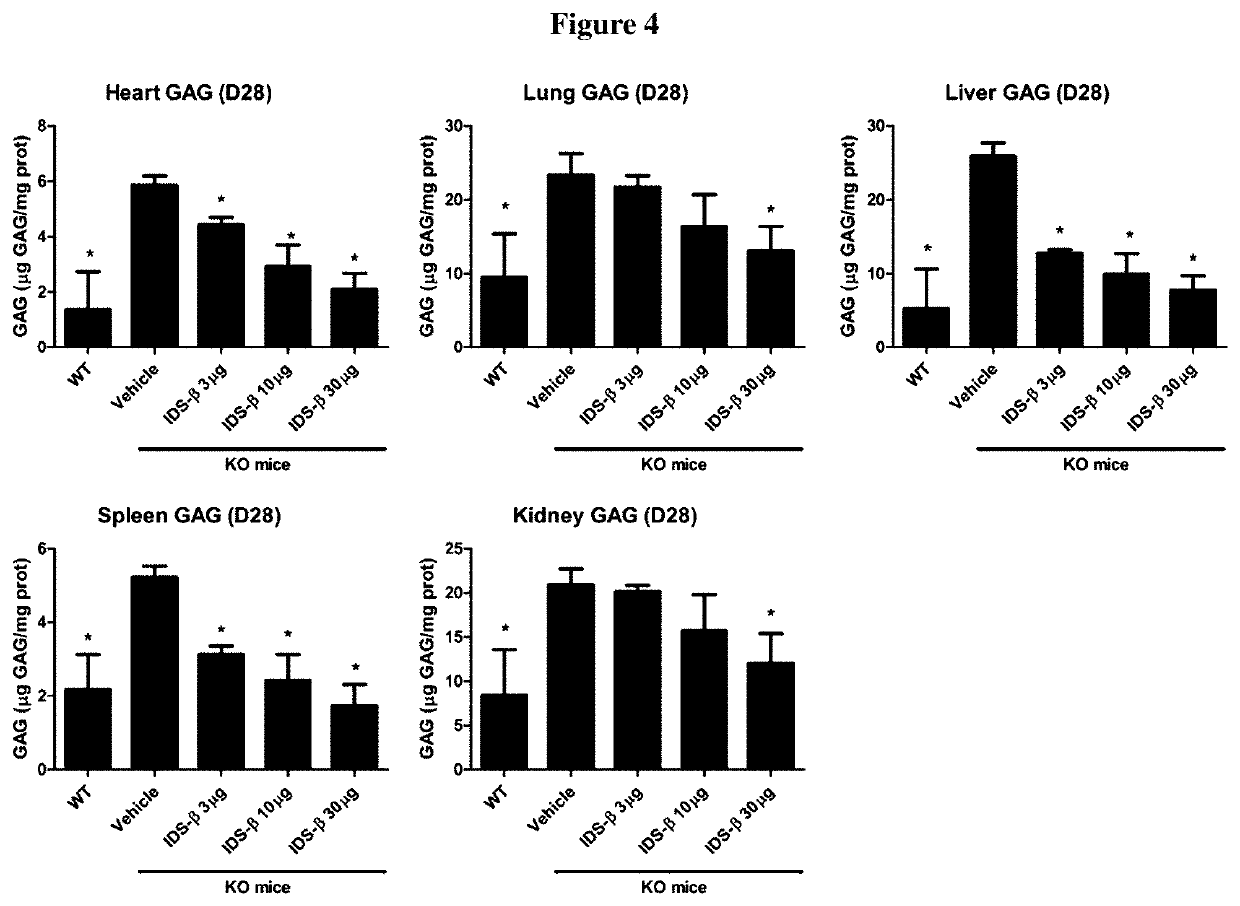Methods and compositions for treating hunter syndrome
a technology for hunting syndrome and compositions, applied in drug compositions, peptide/protein ingredients, metabolic disorders, etc., can solve the problems of undegradable glycosaminoglycan accumulation, progressive multi-organ damage, pathological accumulation of heparan sulfate and dermatan sulfate, etc., to reduce heparan sulfate (hs) and glycosaminoglycans (gags), reduce h
- Summary
- Abstract
- Description
- Claims
- Application Information
AI Technical Summary
Benefits of technology
Problems solved by technology
Method used
Image
Examples
example 1
1-1: Overview
[0073]This study was performed to investigate the pharmacological effect and doseresponse relationship of a single intracerebroventricular (ICV) injection of idursulfase beta (IDS-β) in MPS II mice. In addition, we measured the HS concentration in the CSF and investigated the correlation between the CSF HS and brain tissue HS and GAGs of MPS II mice.
[0074]Three doses of ICV IDS-β injections (3, 10, and 30 μg) were performed, and the tissue GAGs (brain, heart, lung, liver, spleen, and kidney) were measured at 7, 14, and 28 days after injection. HS was measured by using LC / MS-MS in the CSF and brains of mice. The total GAGs in the brain and other somatic tissues of all the IDS-β-treated groups were significantly reduced. The significant reduction was maintained for 28 days in the 30-μg injection group. We also demonstrated that HS content was reduced in both the CSF and brain tissue of all IDS-β-treated groups. Furthermore, we demonstrated that HS concentration in the CSF...
PUM
| Property | Measurement | Unit |
|---|---|---|
| concentration | aaaaa | aaaaa |
| concentration | aaaaa | aaaaa |
| concentration | aaaaa | aaaaa |
Abstract
Description
Claims
Application Information
 Login to View More
Login to View More - R&D
- Intellectual Property
- Life Sciences
- Materials
- Tech Scout
- Unparalleled Data Quality
- Higher Quality Content
- 60% Fewer Hallucinations
Browse by: Latest US Patents, China's latest patents, Technical Efficacy Thesaurus, Application Domain, Technology Topic, Popular Technical Reports.
© 2025 PatSnap. All rights reserved.Legal|Privacy policy|Modern Slavery Act Transparency Statement|Sitemap|About US| Contact US: help@patsnap.com



